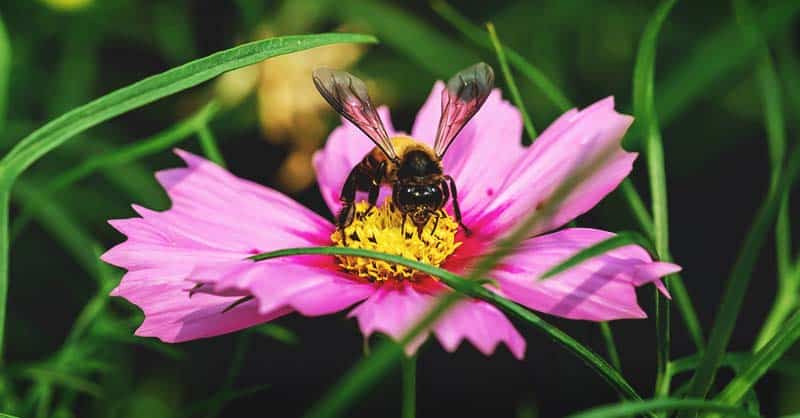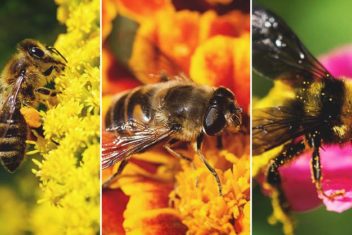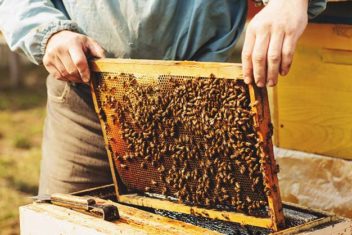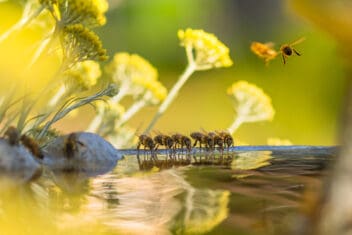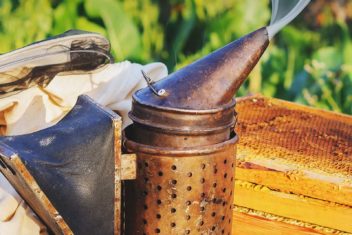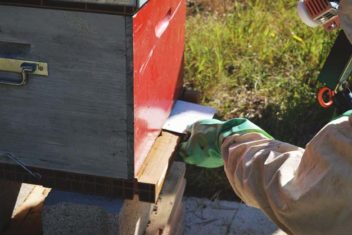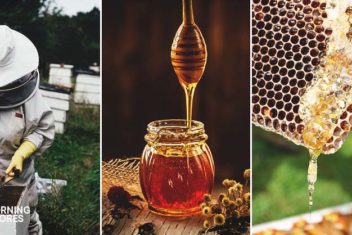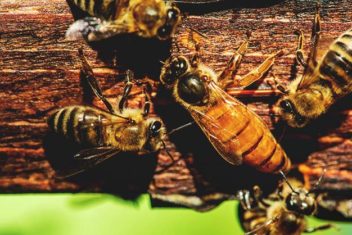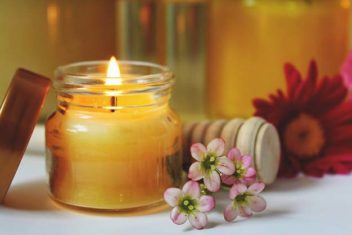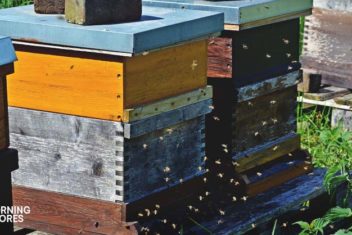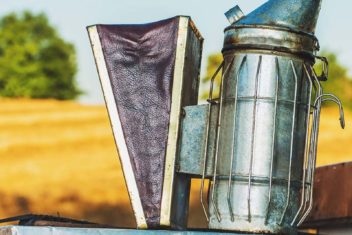There’s so much more to being a beekeeper than just tending to your apiary. Once you’ve dived into this fulfilling beekeeping hobby, you will soon realize that you have opened the door to other opportunities to provide for your bees, and other ways you can utilize their honey and wax.
Aside from making extra income from beekeeping, you can educate others on products that can be created from them and how protecting the bee population is a simple way to contribute to the health of the planet.
One more way to thoroughly enjoy being a beekeeper is to have a bee garden where you can spoil your busy bees, and ensure a strong supply of honey throughout the bee season.
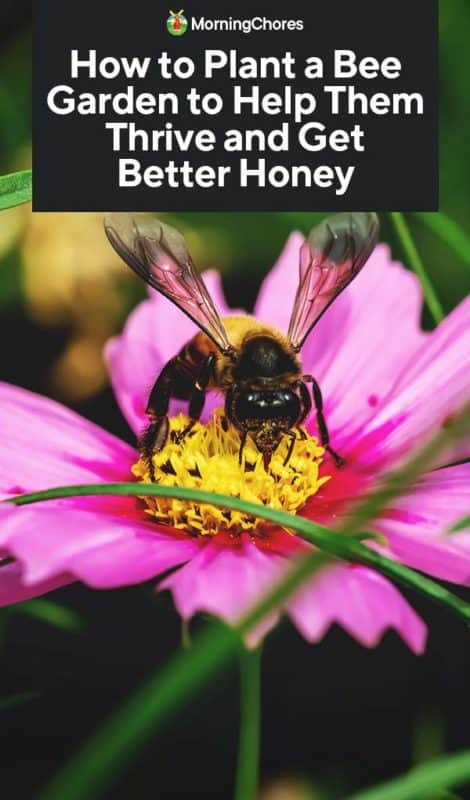
Why Plant a Bee Garden?
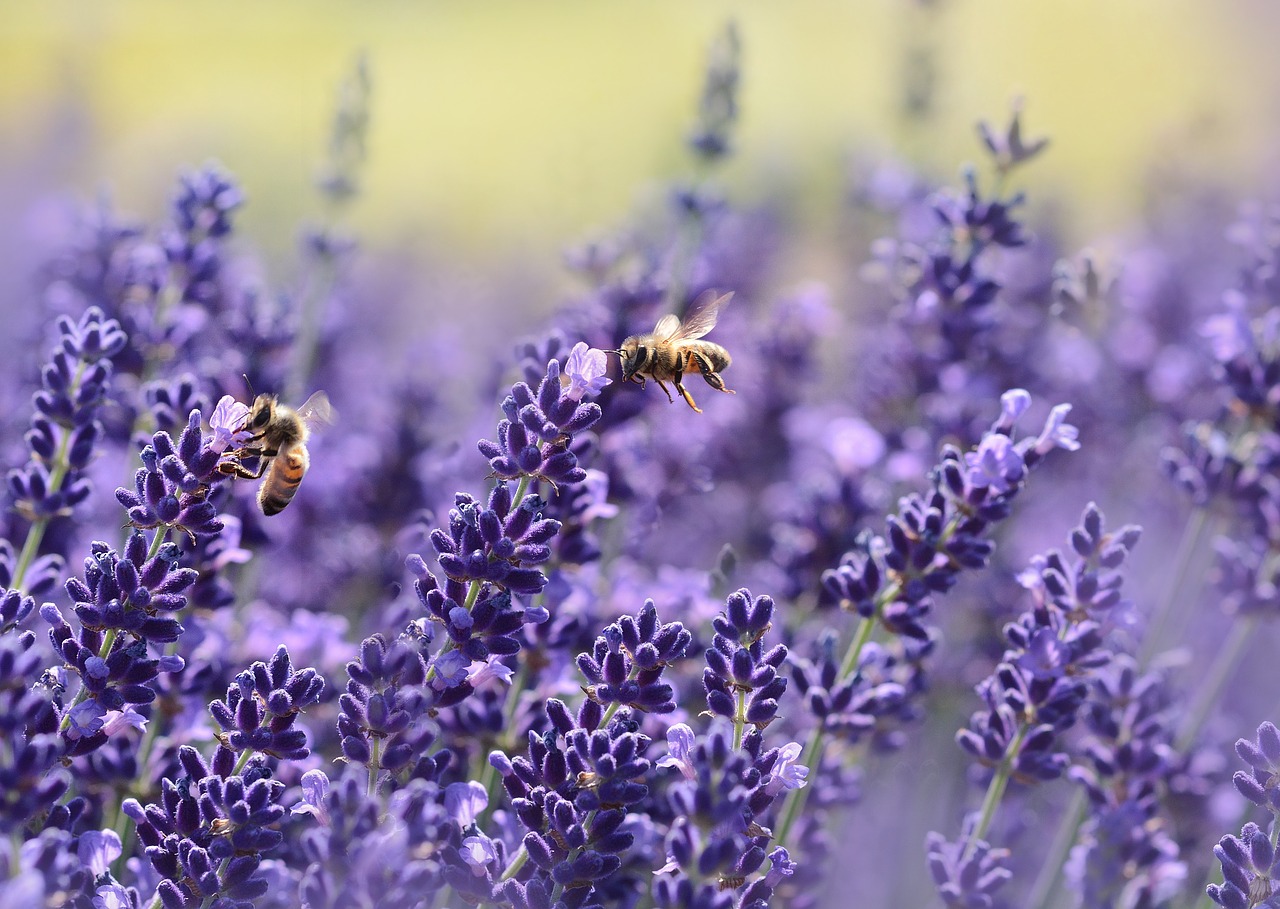
A bee garden is perfect for the beekeeper who wants to provide a special space for their bees to collect their pollen and do their foraging. Pollinator gardens can be the size of a pallet, or an entire field of wildflowers, depending on the space you have available.
Aside from the fact that a bee garden can be a lovely addition to your yard, they are also helpful to your bee colonies and native bees. Additionally, other pollinators, like hummingbirds may find your garden appealing and assist in the cross-pollination process within your garden.
Here are a few other reasons to plant a garden for your bees:
1. Promote the Growth of the World’s Bee Population
It is no secret that the bee population has been declining. There are many theories as to why we have seen a drop in the bee population, some of which include pesticide usage, cell phone radiation, and climate change.
If our world continues to see a decline in the bee population, we are at risk of losing the very creature that pollinates our plants, which are responsible for the food we eat.
Your bee garden will not only help attract your bees to an area with ample amounts of pollen, but it will also feed native bees that may need a boost as well.
2. Food and Honey Throughout the Bee Season
Clearly, your bees need pollen to create honey, so providing them with an area specifically made for them to forage throughout the entire season will ensure they have enough honey stored up for winter, as well as enough for you to harvest.
Beekeeping gardens are best when they have blooms throughout the entire bee season, which is typically March through September, depending on where you live. This means that when one flower goes to seed, a new seasonal flower is right behind it, ready to surrender its pollen to your beloved bees.
3. Shelter for the Bees
Have you ever been caught in the rain without an umbrella? Bees appreciate having access to hiding places if they are caught in inclement weather, or if they are being sought out by a predator, like a bird.
Bee gardens are full of floral foliage and bees love to duck in and out of cover if needed, plus they can forage in the process. Think of a bee garden as a little safe zone for your bees; they are so intelligent that they will easily find security in your garden without any instruction from you.
4. Ability to Control the Plant Types
Setting aside space for your bees to forage means you can decide what plants you would like to provide for them. Since some people believe you can taste the subtle difference between honey that is from different plants, such as clover vs. dandelion it is very possible to control the taste of your own honey by selecting the “flavor” of the plant.
There is a medicinal purpose for providing a specific type of plant for your bees: allergies. There are studies underway focusing on the possibility that exposure to honey derived from specific plants can help to create immunity in those who are allergic to that specific plant through the consumption of the honey.
Ragweed, for example, is an excellent choice for a bee garden, and someone who is allergic to ragweed may see a decrease in their symptoms over time if they consume the honey. This is called immunotherapy, which is what is being performed through routine allergy shots. More on this later.
What To Include in Your Bee Garden
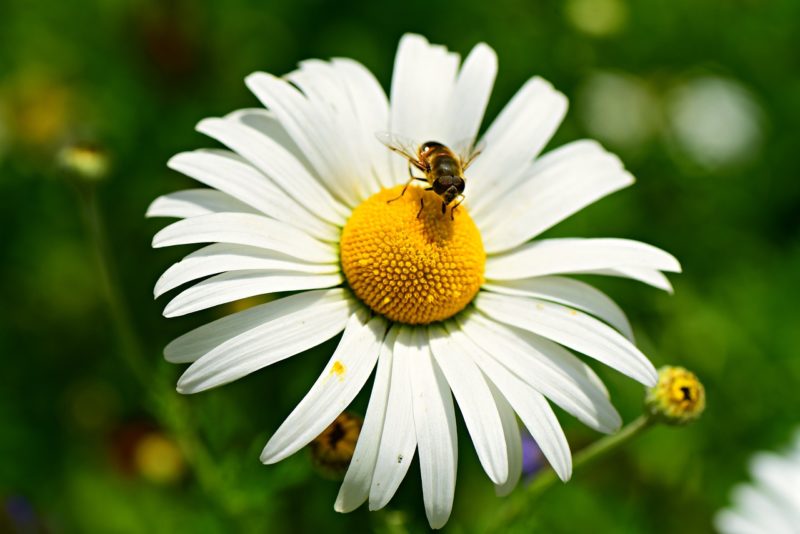
1. Flowers
We all know bees need to forage among flowers, however, there are some types of flowers that are preferred by bees, because they are easier to harvest than others. For example, plants with a single blossom are better for bees than those with a bunch of tight-knit blooms.
If you are good at planning your garden, you can ensure that your bees have at least one or two flowering plants to choose from throughout the entire foraging season.
Here is a quick list of plants to grow in your bee garden that will take turns providing blooms throughout the entire season:
- Spring: hyacinth, borage
- Summer: bee balm (of course), echinacea, and flowering hostas
- Fall: goldenrod, witch hazel, and sedum
2. Bee Baths
Ok, so maybe a bee bath isn’t the best terminology for this element of your new bee garden, but bees do need to have water handy. Bees use water to add moisture to their honey, and of course, to drink.
You can use a cute little birdbath for your bees, but they would benefit more from a dirty puddle of water on the ground. When bees drink the water from a puddle, rather than a raised dish, they are also getting nutrients and minerals from the soil which in turn benefits their health and productivity.
Where to Place Your Bee Garden
When looking for prime real estate for your beekeeping garden consider placing it in an area that is either already along your bees’ major highway, or in an area that they will easily find. Bees are pretty good at finding the best foraging grounds but don’t feel disappointed if it takes them a bit to reevaluate their current flight plan, they are creatures of habit after all.
While you may love to watch your bees foraging through their newly created paradise, not everyone in your household may like to be as close to them, including your pets.
Ideally, you can create your garden near your hive, but not right on top of it, and in a location that doesn’t get much foot traffic. Never forget that there are people who are terrified of bees, as well as allergic, so try your best to be considerate when planting your bee garden.
Weeds Are Perfectly Fine
So, this probably goes without saying, but never use pesticides or herbicides in your bee garden to kill weeds or stop other critters from utilizing the bee paradise. These substances are extremely harmful to your bees, or anything else for that matter, and you want your bees to be completely comfortable in their new garden.
If you start to see a lot of weeds in your bee garden, feel free to pluck them by hand if they bother you, or if they are stifling the floral plants intended for your bees. However, if you have local weeds that are bee-friendly (think dandelions and milkweed) let them thrive because the bees love them and most likely put them there!
Bonus: Milkweed is a favorite amongst monarch butterflies, so these little visitors will add to the beauty of your garden anyway. Win-Win!
We all know that working hard on our homesteads can be exhausting but ultimately you enjoy those quiet moments where you can appreciate the beauty and nature that surrounds you.
Why not indulge yourself with a little garden bench tucked away in your bee garden to take some well-deserved time out to observe your hard-working bees, and just appreciate all the hard work you (and they) are putting in every day. Sit back, relax and enjoy!
